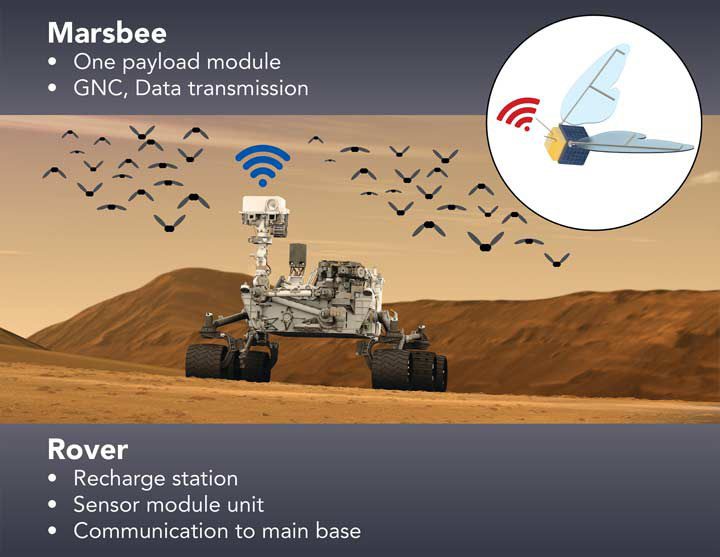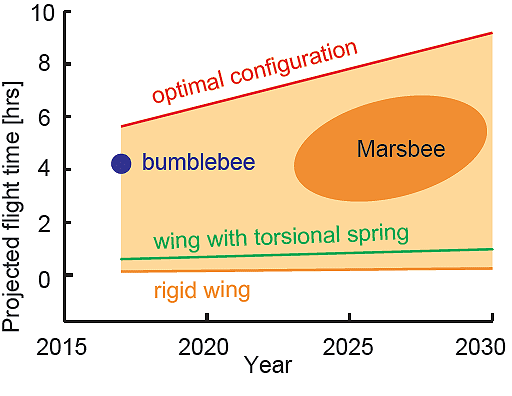
You’ve no doubt heard about the crisis facing bees. The bee population is dwindling, and without bees, vegetation would struggle to grow- leaving us all in trouble. While efforts have been made to protect these insects, NASA has an extremely different idea.
Robotic bees… on Mars.
Announced on March 30th, NASA plans to replace traditional drones and rovers with micro-bots to explore the Red Planet. Their reasoning is that rovers are slow, cumbersome, and very costly. Using robotic bees would not only be cheaper to produce but could cover more ground by virtue of flight and size. Maneuvering around the rocky terrain has already proven to be a major hurdle, as the Curiosity rover has traveled less than 12 miles since landing in 2012.
In a statement, NASA officials dubbed the robots “Marsbees” and said they are “flapping wing flyers of a bumblebee size with cicada-size wings.” While this would make the wings nearly twice the size of the body of the Marsbees, it wouldn’t be a problem considering Mars’ low gravity. This means flight would be entirely possible, even with the obstacle of Mars’ thin atmosphere.
It’s rare to see bots that use flapping wings, as rotating wing robots are considered more stable. But the flapping motion is more logical on Mars, as the bees will need to return to their home station to recharge regularly. The design allows for the incorporation of efficient but low-power technologies vital for function on a different planet. What exactly these technologies will be is, as of yet, unknown.
The goal of the Marsbees, according to The Guardian, is to map out the terrain of the planet and search for signs of methane gas. The Curiosity rover detected traces early in 2018, although it is unclear if they were produced naturally. If the bees pick up signs of more methane, it could indicate that life exists on Mars.

Teams from both the United States and Japan will work on the Marsbees, with each team taking on a different project. The US team based out of the University of Alabama in Huntsville, “will numerically model, analyze, and optimize a flapping flyer for Martian atmospheric conditions.” The Japanese team (from Tokyo University of Science) is in charge of development and testing. Their previous flapping flyer, the Micro-Air Vehicle hummingbird, is one of the few winged robots to ever fly with Earth’s gravity and atmosphere.
As the project was just announced, work is still in Phase I. The focus is on finding the proper wing design and weight that will function on Mars. Phase II will concentrate on take-offs and landings, maneuverability, and other tasks that flight involves. If all goes according to plan, the data gathered by the Marsbees will be vital in NASA’s long-term goal: sending a human to Mars. (It’s worth noting that Marsbees are just one of 25 projects being greenlit to further this endeavor.)

With nine months to go before Phase II can receive the go-ahead from NASA higher-ups, there’s a lot of work to be done. If Marsbees prove to be a success, they could pave the way to breakthroughs not just on Mars, but here on Earth as well. Creating a robotic bee able to traverse Earth’s gravity and spread pollen much like a normal bee could help save the environment. Confirmation of naturally-occurring methane gas could prove that we aren’t alone in our solar system. They may sound silly and bizarre to most, but they could change how we see the world and the worlds beyond us.
According to all known laws of aviation, there is no way a robotic bee should be able to fly. But with the help of science and Martian gravity, the laws of aviation may just be proven false.
Influence the future and follow our World of Innovation on Instagram.







